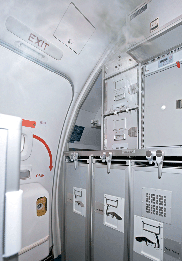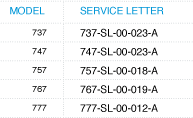

At the recommendation of operators, Boeing has undertaken studies of smoke
and burning odor (SBO) events occurring on airplanes. The studies provide fleetwide information so that operators can take steps to reduce SBO events.
By James A. Holley, Service Engineer
Model-specific service letters present root causes and potential solutions for the most common SBO events.
Although most SBO events in the pressurized area of an airplane are resolved and rarely affect continued safe flight, landing, or egress, they are always significant issues with operational consequences. These consequences can include flight cancellations, flight schedule disruptions, air turnbacks, and airplane diversions. SBO events can also result in declared emergencies, airport emergency equipment responses, airplane evacuations, accommodations for displaced passengers, diminished goodwill, and extensive unscheduled maintenance following non-normal procedures, such as overweight landing inspection, recharging of oxygen, and repacking of escape slides.
In an effort to provide information that can help operators take steps to reduce SBO events, Boeing launched a series of ongoing studies of these events on Next-Generation 737, 747, 757, 767, and 777 airplane models. This article explains the scope of the studies and describes how the analysis is conducted, how the results are communicated, and how the results may be used. It also describes the use of an oil leak detection kit to assist ground crews in isolating the source of odors and provides an overview of appropriate flight crew response to SBO events.
SBO STUDIES INITIATED IN 2004
Since 2004, Boeing has been examining events in which human senses detect a condition inside the pressurized area of an airplane that may result in a conclusion that there is a potentially dangerous ignition source or atmospheric contamination present that needs immediate corrective action. The studies exclude human visual or aural detection of automated alarms.
Figure 1: Service letters on SBO events

Service letters addressing the issue of SBO events can be accessed through the Web portal MyBoeingFleet.com. Note: McDonnell-Douglas models are not included in the SBO study; however, similar service letters have been published for these models and are referred to as “smoke in the cabin.”
The SBO studies are ongoing investigations involving the models cited above, with reports released at least annually through updated model-specific service letters titled “Smoke and Burning Odor (SBO) Event Summary” (Air Transport Association of America [ATA] Chapter 0000-80). The reports address all SBO events reported to Boeing for the period identified in the service letter (see fig. 1).

